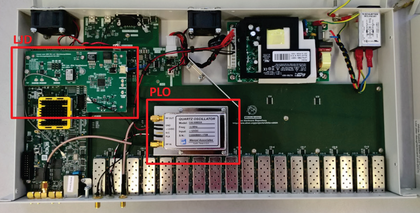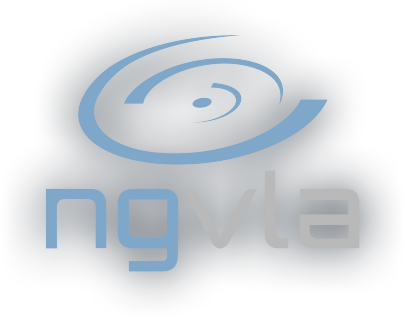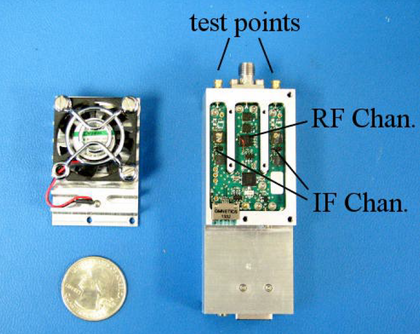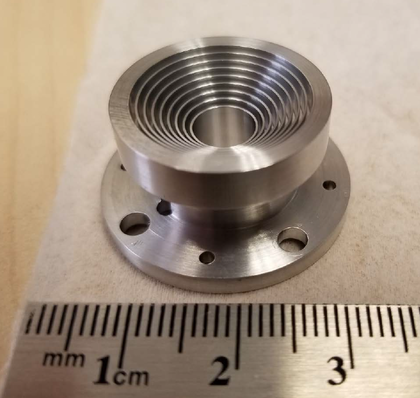Technology Development for a
Next-Generation VLA
In collaboration with the community, the ngVLA project is conducting research and development of key enabling technologies for the ngVLA.
These focused development projects will enable NRAO to ensure that the resulting design is both low cost and low technical risk. While a portion of this research and development will be conducted within the Observatory, NRAO will engage the broader technical community with subcontracts for development studies, supporting intellectual property development at both commercial firms and higher education institutions.
A set of thirteen technical community studies were proposed and approved in 2016. These span a broad range of topics from receiver development, cryogenics, antenna reflector and mount designs, to correlator architectures and low-frequency commensal systems.

Modified White Rabbit Time and Frequency Distribution system with low-phase noise phase-locked oscillator and low jitter daughter-board by OPNT B.V.
Work in 2018 and 2019 has focused on feed development, high-reliability and high-efficiency cryogenic system design, integrated receiver development MMIC and ASIC technology, Water Vapor Radiometry for phase calibration, and time and frequency distribution systems that eliminate the need for multiple primary frequency references.
In parallel to these technology development activities, the project has advanced the design of the ngVLA concept, formalizing the L0 Science Requirements, supporting L1 System Requirements, and the System Architecture. We are also advancing key elements of the design, such as refinements to the receiver noise model, the cryogenic thermal model, and algorithmic development. Recent awards from the National Science Foundation are also supporting the development of a prototype antenna.






